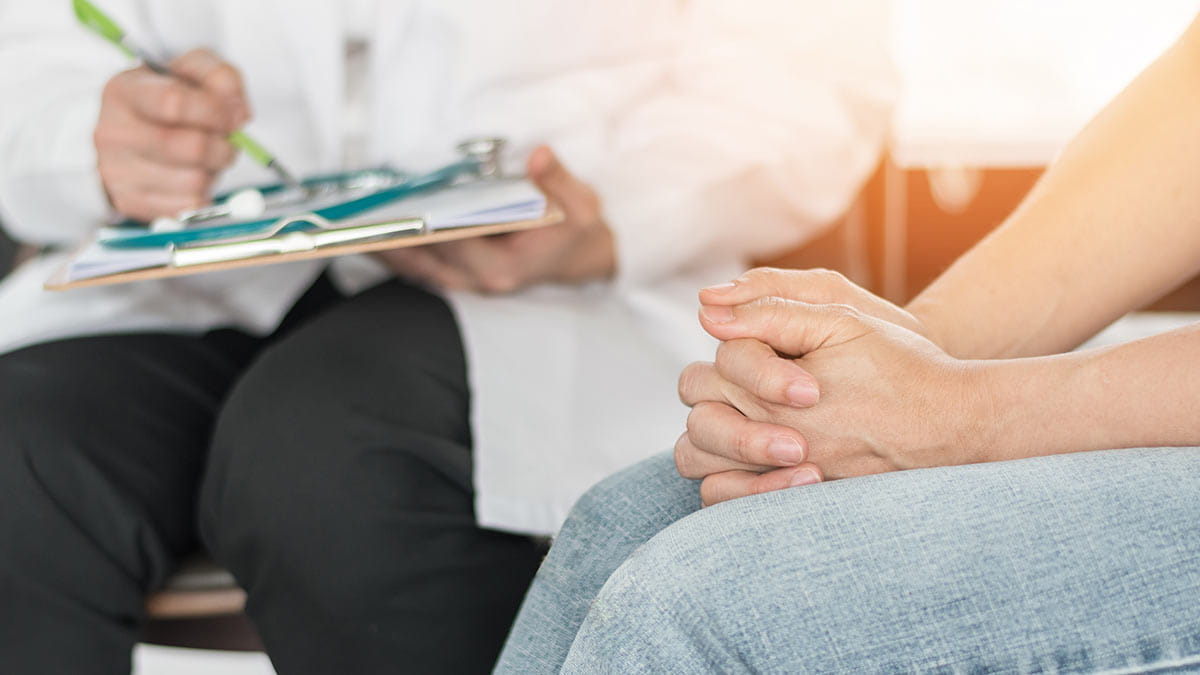Gonorrhoea significantly impacts public health, affecting millions of people worldwide every year. If left untreated, gonorrhoea can lead to severe health complications such as infertility, ectopic pregnancy, and an increased risk of acquiring other sexually transmitted infections (STIs), including HIV. Understanding the dangers and prevention of gonorrhoea is crucial to minimise the spread of this infection and its consequences.
Awareness of gonorrhoea symptoms, knowing how to detect gonorrhoea, and implementing preventative measures, can help individuals protect themselves and others from the disease. Educating the public about this STI and promoting safe sexual practices can significantly reduce its prevalence and impact on public health.
Table of Contents
What is Gonorrhoea?
Gonorrhoea is a form of sexually transmitted infection (STI) caused by the bacterium Neisseria gonorrhoeae. This bacterial infection can affect men and women and is transmitted through sexual contact with an infected person. Gonorrhoea primarily infects the mucous membranes of the genital, anal, and oral regions. The bacterium can also be passed from an infected mother to her newborn during childbirth.
Common Gonorrhoea Symptoms
Gonorrhoea can affect both men and women, leading to serious complications if left untreated. Gonorrhoea symptoms can vary between individuals, and some may not experience any symptoms (asymptomatic). However, common symptoms can include:
For Men:
- Painful Urination
A burning sensation or urinating pain is one of the most common gonorrhoea symptoms in men.
- Pus-Like Discharge
A white, yellow, or green discharge from the penis may be observed.
- Swollen or Painful Testicles
Gonorrhoea can cause swelling or pain in one or both testicles, although this is less common.
For Women:
- Painful Urination
Like men, women may also experience a burning sensation or pain when urinating.
- Vaginal Discharge
A rise in vaginal discharge, which may be pus-like, is a gonorrhoea symptom.
- Abnormal Vaginal Bleeding
Women with gonorrhoea may experience irregular menstrual bleeding or spotting between periods.
- Painful Sexual Intercourse
Discomfort or pain during sex can be a symptom of gonorrhoea in women.
- Lower Abdominal or Pelvic Pain
It can be due to the infection spreading to the uterus or fallopian tubes.
Long-Term Complications If Left Untreated
If left untreated, gonorrhoea can lead to several long-term complications, impacting both men and women:
For Men:
- Epididymitis
Inflammation of the epididymis is the tube that carries sperm from the testicles. It can cause pain, swelling, and in some cases, infertility.
- Prostatitis
Untreated gonorrhoea can cause inflammation of the prostate gland, resulting in pain, difficulty urinating, and, potentially, chronic prostatitis.
- Urethral Stricture
Scarring of the urethra caused by untreated gonorrhoea can lead to a narrowing or blockage, making it difficult to urinate and increasing the risk of urinary tract infections.
For Women:
- Pelvic Inflammatory Disease (PID)
Untreated gonorrhoea in women can spread to the uterus, fallopian tubes, and ovaries, causing PID. It can result in chronic pelvic pain, ectopic pregnancy, and infertility.
- Complications in Pregnancy and Newborns
Pregnant women with untreated gonorrhoea are at an increased risk of preterm labour, premature rupture of membranes, and low birth weight infants. Gonorrhoea can also be transmitted to the newborn during childbirth, leading to eye, joint, or even life-threatening blood infections in the baby.
- Fitz-Hugh-Curtis Syndrome
In some cases, untreated gonorrhoea can cause inflammation of the liver capsule, leading to a condition called Fitz-Hugh-Curtis syndrome. It can cause severe right upper abdominal pain and may require medical intervention.
- Ectopic Pregnancy
Women with untreated gonorrhoea have a higher risk of developing an ectopic pregnancy, which occurs when a fertilized egg implants outside the uterus, usually in the fallopian tubes. Ectopic pregnancies can be life-threatening and typically require emergency medical intervention.
For Both Men and Women:
- Disseminated Gonococcal Infection (DGI)
In rare cases, the gonorrhoea bacteria can spread through the bloodstream and infect other body parts, such as the skin, joints, heart, and brain. Symptoms of DGI can include fever, joint pain, and skin rashes.
- Infertility
Both men and women can experience infertility due to untreated gonorrhoea. It can be due to scarring or blockages in the reproductive organs.
- Increased Risk of HIV
Individuals with gonorrhoea have an increased risk of contracting and transmitting HIV if exposed. Similarly, if someone has HIV and gonorrhoea, the likelihood of transmitting HIV to a sexual partner is higher.
- Rectal Complications
Gonorrhoea can also infect the rectum in both men and women, leading to symptoms like anal itching, discharge, bleeding, or pain during bowel movements. Untreated rectal gonorrhoea can cause long-term discomfort and complications, such as proctitis, anal fissures, or abscesses.
- Joint and Tendon Infections
Untreated gonorrhoea, especially in cases of disseminated gonococcal infection, can cause infections in joints and tendons, leading to pain, swelling, and limited movement.
Gonorrhoea Can Spread Through Kissing, New Study Finds
Recent studies conducted by researchers from the Melbourne Sexual Health Centre have found evidence suggesting that gonorrhoea, a common sexually transmitted infection, can be spread through kissing. These findings challenge the longstanding belief among health experts that gonorrhoea is transmitted exclusively through unprotected sex.
Although the British Association for Sexual Health and HIV acknowledges the importance of new research into STI transmission, they emphasise that gonorrhoea is primarily passed through unprotected oral, vaginal, or anal sex and that mouth-to-mouth transmission is likely rare. However, these findings highlight the importance of regular testing for individuals, especially after engaging in condomless sex with a new or casual partner.
The NHS states that gonorrhoea cannot be spread through mouth-to-mouth contact, while the US CDC advises that there isn’t enough evidence to prove it’s spread by kissing. With the recent increase in gonorrhoea cases and the emergence of antibiotic-resistant strains, these new findings may prompt a reevaluation of existing guidelines and recommendations concerning the transmission and prevention of gonorrhoea.
How to Detect Gonorrhoea
Detecting gonorrhoea involves laboratory tests, as the gonorrhoea symptoms can be similar to those of other sexually transmitted infections (STIs) or may not be present (asymptomatic). Suppose you suspect you have gonorrhoea or are at risk of contracting the infection. In that case, it is essential to consult a healthcare professional for proper testing and diagnosis.
The testing process generally involves the following steps:
- Sample Collection
Depending on your sex, sexual practices, and the site of the suspected infection, the healthcare provider will collect one or more samples. It may include a urine sample, a swab of the cervix in women, a swab of the urethra in men, or swabs from the throat or rectum if oral or anal sex has occurred.
- Laboratory Testing
The gathered samples will be delivered to a lab. Several methods can be used to detect the presence of Neisseria gonorrhoeae, the bacterium responsible for gonorrhoea:
- Nucleic Acid Amplification Tests (Naats)

NAATs are the most commonly used and highly sensitive tests for detecting gonorrhoea. They work by identifying the genetic material of the bacteria.
- Gram Stain
A gram stain involves applying a special dye to the sample and examining it under a microscope. This test is typically used for men with urethral discharge but needs to be more accurate for women and other infection sites.
- Culture
The sample is placed in a growth medium to allow the bacteria to grow, and the grown bacteria are identified. Cultures are less sensitive than NAATs but can help determine antibiotic resistance.
- Results and Diagnosis
The results of the tests will be communicated to you by your healthcare provider within a few days to a week. If the test is positive for gonorrhoea, the healthcare provider will recommend appropriate treatment, typically with antibiotics.
- Partner Notification and Testing
If you have gonorrhoea, you should notify your sexual partners so that they can be tested and treated if necessary. It helps prevent the spread of the infection and reduces the risk of reinfection.
Diet and Lifestyle Tips for Gonorrhoea Prevention
Preventing gonorrhoea involves a combination of safe sex practices and maintaining a healthy lifestyle to support your immune system. A robust immune system reduces the risk of contracting sexually transmitted infections (STIs), including gonorrhoea.
The following are tips on what to eat and which practices on how to prevent gonorrhoea.
Dietary Choices for Gonorrhoea Prevention:
- Immune-Boosting Foods
To support a strong immune system, include foods in your meals high in vitamins and minerals known for their immune-boosting properties. Examples of these foods include:
- Citrus fruits (oranges, grapefruits, lemons) – rich in vitamin C
- Dark leafy greens (spinach, kale, collard greens) – packed with vitamins A, C, and E
- Nuts and seeds (almonds, sunflower seeds, pumpkin seeds) – sources of vitamin E and zinc
- Seafood (oysters, salmon, sardines) – rich in zinc and selenium
- Colourful vegetables (bell peppers, sweet potatoes, tomatoes) – provide vitamins A and C
- Lean Proteins

Lean protein sources are essential for maintaining a healthy immune system. Incorporate options such as chicken, turkey, fish, beans, and legumes into your diet.
- Whole Grains
Select whole grains such as brown rice, quinoa, and whole wheat bread to get essential nutrients and fibre that will benefit your overall health.
- Healthy Fats
Healthy fats like avocados, olive oil, and nuts support immune function and well-being. Make sure to include these in your daily diet.
- Probiotics

Consuming probiotics found in yoghurt, kefir, and fermented foods like sauerkraut and kimchi can help maintain a healthy balance of gut bacteria, which is important for overall health and immune function.
- Hydration

Hydration is critical for overall health and immune system function. Drink adequate water daily, typically around 8-10 cups for most adults.
Lifestyle Practices for Gonorrhoea Prevention:
- Safe Sex Practices

Consistently and correctly use barrier methods, such as condoms or dental dams, during sexual activity to reduce the risk of contracting or transmitting gonorrhoea.
- Regular STI Testing
Undergo regular STI screenings, especially if you have multiple sexual partners or engage in unprotected sexual activities.
- Open Communication With Sexual Partners
Discuss your testing history, potential exposure to STIs, and your expectations for safe sex practices with your sexual partners.
- Regular Exercise

Engage in regular physical activity to promote good circulation and meditation, which helps immune cells travel throughout the body more effectively. Aim for at least 150 minutes of moderate or 75 minutes of vigorous exercise per week.
- Maintain A Healthy Weight
Maintaining a healthy weight can contribute to a strong immune system and well-being.
- Stress Reduction
Implement relaxation techniques, such as meditation and yoga, deep breathing exercises, or engaging in hobbies and activities that bring joy to lower stress levels and improve immune function.
- Adequate Sleep

Aim for 7-9 hours of good sleep each night for optimal immune function.
Empowering Sexual Health
In the fight against gonorrhoea, knowledge is power. Readers need to educate themselves and others about the risks, transmission methods, and prevention strategies related to gonorrhoea.
Spread this information with your family, friends and sexual partners to encourage open, honest conversations about sexual health. Working together to increase awareness and promote proactive measures can make a significant impact in reducing the prevalence of gonorrhoea and improving sexual health for all.

